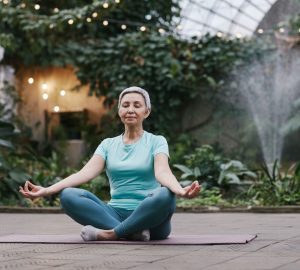Jogging is one of the best ways to burn calories and build muscle. Believed to be less stressful on the joints and bones than running, this is an incredibly popular form of exercise for people from all walks of life and of all ages.
In addition to promoting weight loss, and higher levels of both cardiovascular and respiratory health, a good jog can balance a person’s mood by releasing powerful, “feel good” chemicals known as endorphins. To ensure that your jogs are always safe and pleasant experiences, however, you should definitely take advantage of the following tips.
Wear Reflective, Bright-Colored Clothing
Bright, reflective clothing is a must for every jogger. This gear ensures that drivers and others can see you on overcast days and when you’re jogging early in the morning or late at night.
When choosing reflective gear, make sure that it has elements that will keep you visible from all sides. The best articles have reflective patches or other elements at the back, at the chest, and on the arms and legs. The more opportunities that others have to see you; the easier it will be for them to stop before colliding into you.
Never Assume That Drivers Can See You
No matter how bright or reflective your running clothes may be, never assume that drivers can see you. Avoid running on the shoulder of the road or in the bike lane, and stick to sidewalks instead. When crossing streets, try to make eye contact with drivers before heading out. This will give you the chance to visually confirm that they won’t advance when you do. While you might be anxious to keep your heart rate up, avoid jay-walking at all costs.
It’s far safer to always cross at the signal. It’s additionally important to:
- Keep your music down while running so you can hear what’s going on around you
- Avoid fumbling with your phone or music player while crossing intersections
- Limit all other potential distractions
Never Jog Alone at Night
Not being seen by potentially distracted motorists isn’t your only concern when going for a jog. People who aren’t careful about where they jog and how they plan their runs are vulnerable to muggings and other violent crimes. If you’re going out after the sun has set, consider traveling in a group. If running alone, bring along a whistle so that you can attract attention if you ever need to.
If you prefer running at night by yourself, consider taking a self-defense course. This will make you a far less vulnerable target for any ill-intentioned parties that you might encounter.
Jog While Facing Traffic
Running while facing traffic is the best way to identify potential problems before they actually occur. If you keep your back to traffic, you won’t have the opportunity to spot distracted drivers, cars that are spinning out of control, or other potentially dangerous issues. Moreover, when you run facing traffic, drivers are more likely to see and pay attention to you.
Bring Your Phone With You
If things ever do go awry while you’re out on a jog, you’ll want to have your phone with you. This will enable you to call for help right away. Should someone hit you with their car, you can use your mobile phone’s camera to document the scene of your accident. This way, you’ll have solid evidence to share with your Miami personal injury lawyer.
Try To Complete Your Jog During the Daylight Hours
The air is crisper, cooler and somehow more invigorating during the early morning and nighttime hours. Notwithstanding this fact, scheduling your jog while it’s still light outside is always safest. Drivers and cyclists will have an easier time seeing you when the sun is still out. More importantly, if you’re ever struck by a car while jogging, being out while the roads are still busy increases the likelihood of your getting timely help.
Engaging in routine physical exercise is one of the best ways to promote good health and longevity. When you choose jogging as your preferred workout, you’ll have the additional stress-busting benefit of being surrounded by natural scenery. Using the tips above will keep you safe on your runs by helping you avoid some of the most common jogging-related accidents.








